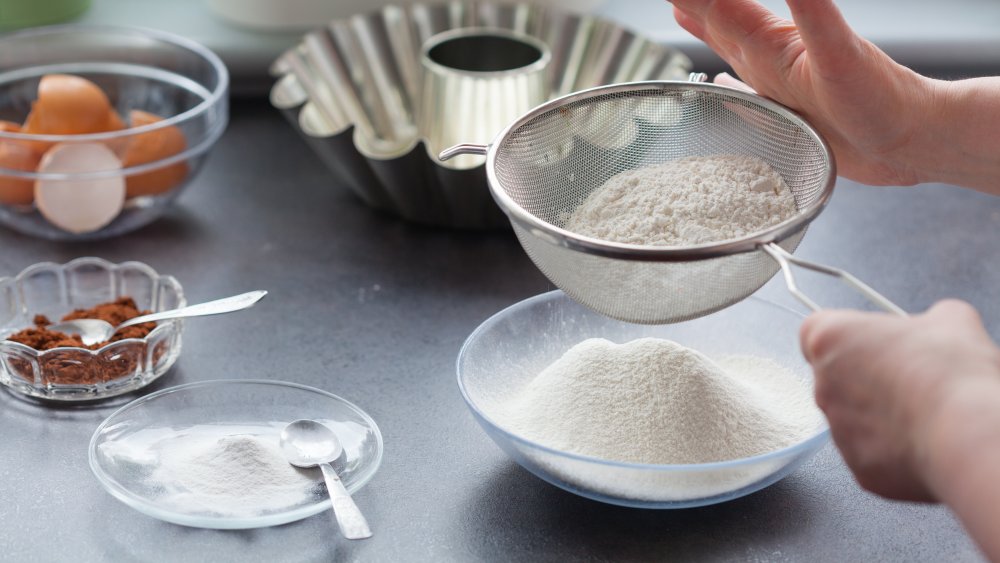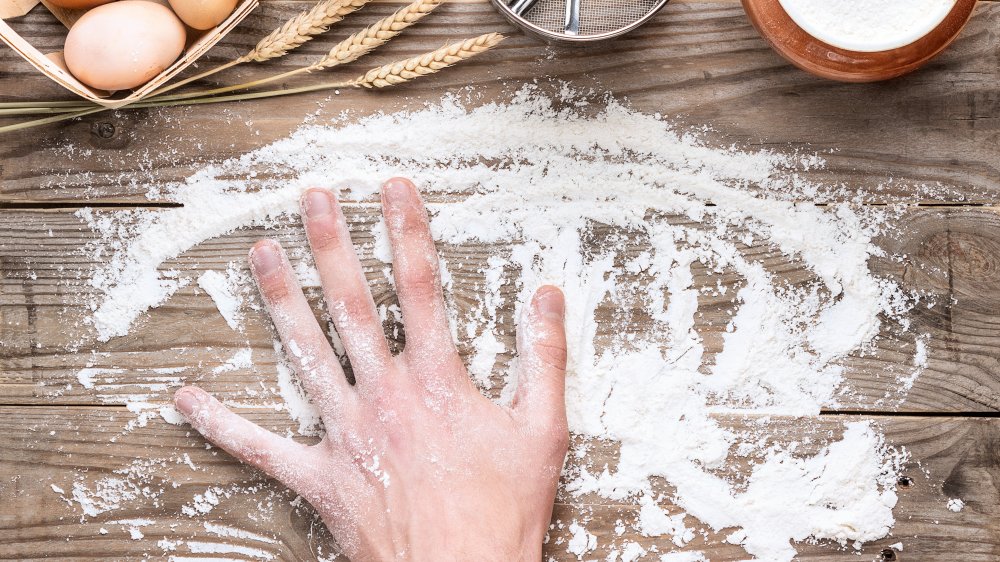Here's What You Can Substitute For Cake Flour
The basic white flour most of us use for our everyday baking needs is called all-purpose flour, and its name pretty much says it all. Every once in a while, though, you might come across a recipe that calls for cake flour — what, exactly is this, and how is it different from all-purpose flour?
Cake flour is more finely milled and is used in baked goods where you want a light, delicate texture such as angel food cake or that '50s favorite, chiffon cake. Cake flour also contains less protein than all-purpose flour, and this protein is what forms the binding agent gluten when combined with the liquids in your recipe. Gluten helps baked goods hold their shape, but the higher the gluten content, the tougher the end product (via Epicurious). This is also the reason you should never over-stir your cake batter, since the more you work it, the more gluten will form and the heavier your cake will be.
What happens if you use all-purpose flour instead of cake flour? The Spruce Eats says the change in texture should be fairly subtle –— maybe a slightly denser cake, with a larger crumb, but not anything that will really ruin your recipe. If you do want to stay faithful to the original recipe, but would prefer to skip a trip to the store to pick up a type of flour you'll seldom use, here's some good news: cake flour is super-easy to DIY yourself.
How to make your own cake flour
All you'll need for homemade cake flour is all-purpose flour and cornstarch. Why cornstarch? Because this product keeps some of the all-purpose flour's gluten from developing, which gives it a similar effect to that of using lower-protein cake flour in the first place.
For each cup of cake flour needed, measure one cup of all-purpose flour into a bowl, then remove two tablespoons of that flour and return them to the flour bag. Add two tablespoons of cornstarch to the flour in the bowl and whisk them together. As a final step, sift the flour mixture. This will not only ensure that the cornstarch and flour are thoroughly combined, but will also give your DIY cake flour that extra soft and airy feel that you get from the store-bought kind.
And there you go! Easy-peasy, and now you're all set to bake an amazingly tender angel food cake that's truly worthy of the name.

